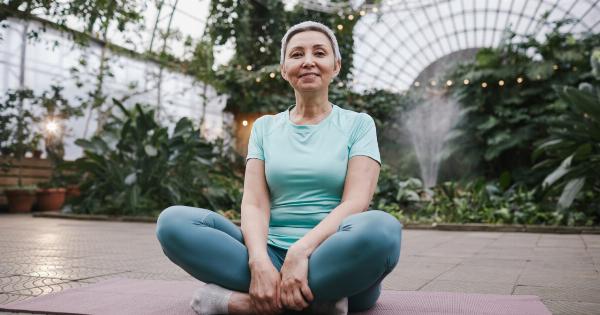Many people love the idea of having a dog as a companion but struggle with limited living space, such as an apartment or a house with a small yard.
In such cases, the balcony or terrace may seem like a viable option to provide some outdoor space for the dog. However, it is important to consider the safety and well-being of the dog in such a setup. In this article, we will explore the potential risks and benefits of keeping a dog on a balcony or terrace.
Benefits of having a dog on a balcony or terrace
1. Fresh air and sunlight: Dogs need regular exposure to fresh air and sunlight for their overall well-being. A balcony or terrace can provide access to these natural elements, especially if there are no other outdoor spaces available.
2. Enrichment and mental stimulation: Being able to see and hear the hustle and bustle of the surroundings from a higher vantage point can provide mental stimulation for dogs.
It can also give them a chance to experience different sights, sounds, and smells, which can be enriching for their overall experience.
3. Suitable for small dogs: Balconies or terraces can be ideal for small dog breeds that do not require a large area to roam and play. These spaces can offer them a safe environment to get some exercise and enjoy the outdoors.
Risks and considerations
1. Lack of space: Balconies and terraces are typically small and may not offer sufficient space for larger dog breeds to move around comfortably.
Dogs require regular physical exercise, and if they are confined to a small area, it can negatively impact their physical health and overall well-being.
2. Falls and accidents: Balconies and terraces pose a significant risk of falls and accidents for dogs. Dogs, especially curious or excitable ones, may try to jump off the railing or squeeze through gaps, resulting in severe injuries or even fatalities.
It is crucial to ensure that the balcony or terrace is properly enclosed and secure before considering it as a dog’s living space.
3. Noise and stress: Living on a high floor or in a bustling neighborhood may expose dogs to excessive noise, which can be stressful for them.
It is important to assess the noise levels and determine whether it would negatively impact the dog’s overall well-being and quality of life.
4. Lack of socialization: Dogs require regular socialization with other dogs and humans to develop proper social skills and behavior.
Keeping a dog solely on a balcony or terrace may limit their opportunities for social interactions, leading to behavioral issues and a lack of exposure to different environments.
Tips for safely keeping a dog on a balcony or terrace
1. Secure the space: Ensure that the balcony or terrace is properly enclosed and secure to prevent falls and accidents. Use sturdy railings or fencing that a dog cannot easily climb or jump over.
Check for any gaps or holes that need to be repaired to ensure the dog’s safety.
2. Provide shade and shelter: Dogs need access to shade and shelter to protect them from harsh weather conditions. Make sure there is a shaded area or provide a dog house or canopy where the dog can seek refuge during hot sunny days or when it rains.
3. Create a pet-friendly environment: Make the balcony or terrace a comfortable and stimulating space for the dog. Provide toys, a water bowl, and a comfortable bed or mat for the dog to relax.
Consider adding plants or grass patches to create a more natural environment.
4. Regular exercise and mental stimulation: Dogs need regular physical exercise to stay healthy. Take your dog for daily walks and provide opportunities for play and interaction.
Additionally, engage your dog in mental stimulation activities like puzzle toys or obedience training to keep their minds active and prevent boredom.
5. Monitor noise levels: Pay attention to the noise levels in the area. If the noise is excessive and causes stress to your dog, it may not be suitable to keep them on a balcony or terrace.
Consider using white noise machines or soundproofing techniques to create a more peaceful environment for your furry friend.
Conclusion
While balconies and terraces can offer some benefits for dogs, it is essential to prioritize their safety and well-being. Dogs require adequate space, socialization, and mental stimulation to lead a happy and healthy life.
If you choose to keep a dog on a balcony or terrace, ensure that the space is secure, comfortable, and meets their needs. Regular monitoring, exercise, and mental stimulation are crucial for their overall well-being.































